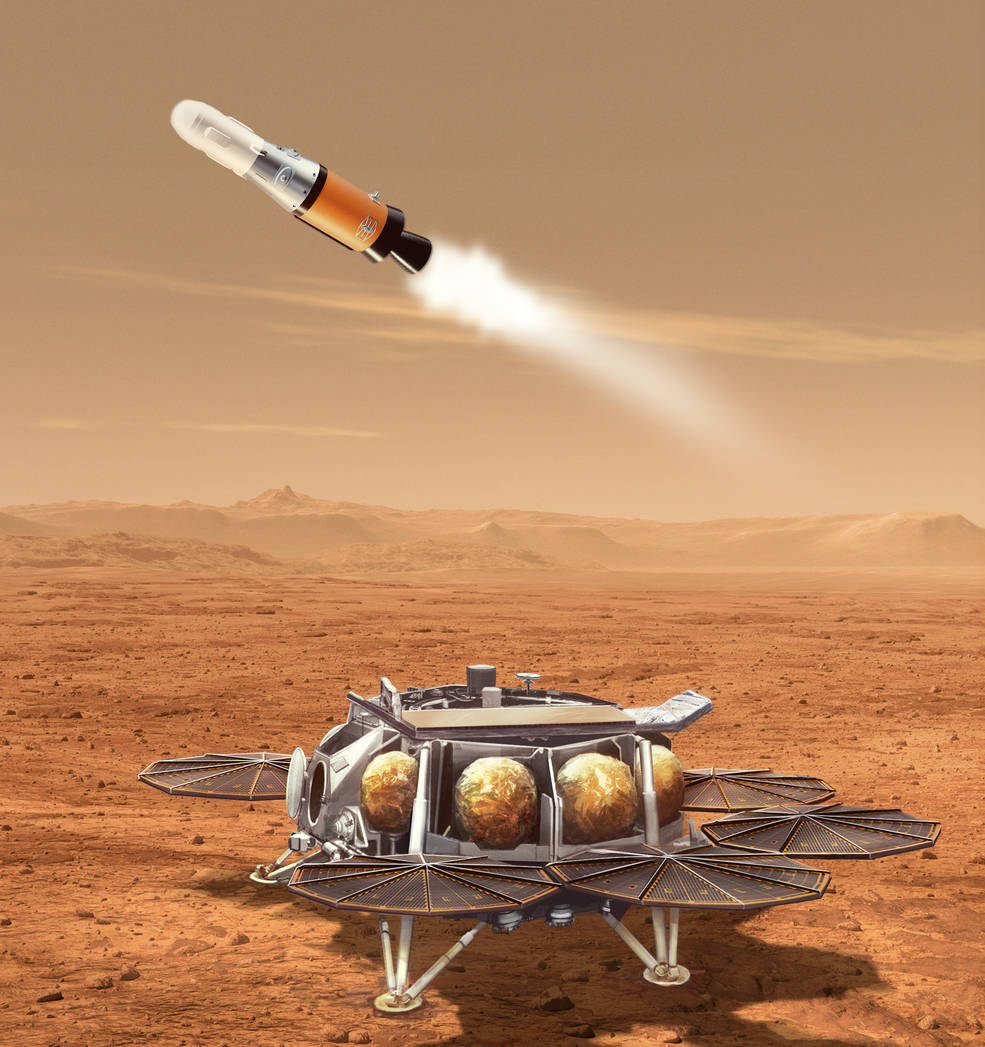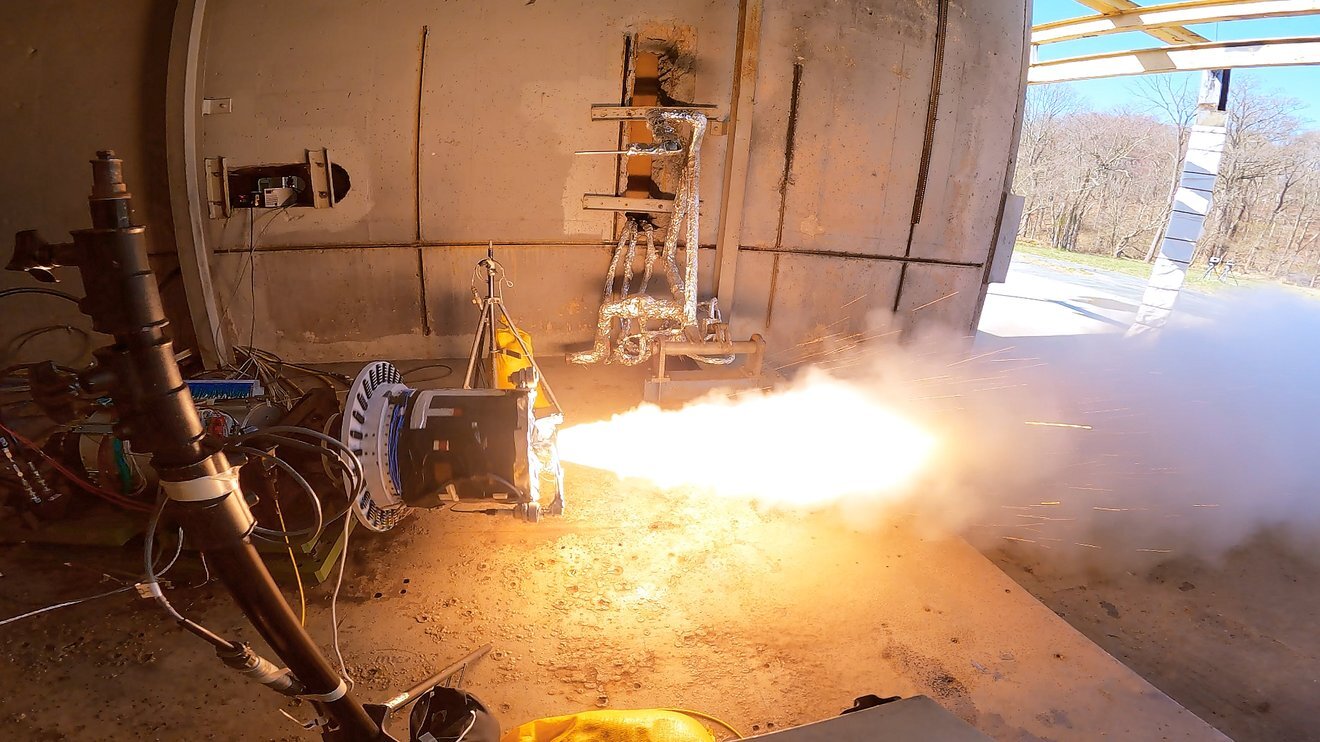23.07.2022

Editor's Note: This advisory was updated on July 21 to note that audio of the media teleconference will livestream on the agency's website.
NASA will host a media teleconference at 11 a.m. EDT on Wednesday, July 27, to discuss the architecture for its Mars Sample Return campaign.
Audio of the teleconference will livestream online at:
NASA and ESA (European Space Agency) recently held a systems requirement review as part of the Mars Sample Return campaign’s conceptual design phase -- a phase when the architecture is refined and solidified. The briefing will present the architecture proposal that is expected to be finalized in September 2022.
The Mars Sample Return campaign may revolutionize humanity’s understanding of Mars by returning scientifically selected samples for study using the most sophisticated instruments around the world. This strategic partnership with ESA will be the first mission to return samples from another planet, including the first launch from the surface of another planet. The samples to be returned – currently being collected by Perseverance during its exploration of Jezero Crater, home to an ancient river-delta – are thought to be the best opportunity to reveal the early evolution of Mars, including the potential for life.
Teleconference participants include:
- Thomas Zurbuchen, associate administrator, Science Mission Directorate, NASA Headquarters in Washington
- David Parker, director of Human and Robotic Exploration, ESA
- Jeff Gramling, director, Mars Sample Return Program, NASA
- Francois Spoto, head of Mars exploration group, ESA
Media interested in participating in the call should send their full name, media affiliation, email address, and phone number to Alana Johnson no later than two hours before the start of the call at: alana.r.johnson@nasa.gov. A copy of NASA’s media accreditation policy is available online.
Quelle: NASA
----
Update: 14.10.2022
.
NASA’s Mars Mission Shields Up for Tests

Micrometeorites are a potential hazard for any space mission, including NASA’s Mars Sample Return. The tiny rocks can travel up to 50 miles per second. At these speeds, "even dust could cause damage to a spacecraft," said Bruno Sarli, NASA engineer at NASA’s Goddard Space Flight Center, Greenbelt, Maryland.
Sarli leads a team designing shields to protect NASA's Mars Earth Entry System from micrometeorites and space debris. Recently, he traveled to a NASA lab, designed to safely recreate dangerous impacts, to test the team’s shields and computer models.
Set far away from residents and surrounded by dunes, the Remote Hypervelocity Test Laboratory at NASA’s White Sands Test Facility in Las Cruces, New Mexico, has supported every human spaceflight program from the Space Shuttle to Artemis. The lab also supports testing for the International Space Station, Commercial Crew, and Commercial Resupply programs.
The lab uses 2-stage light gas guns to accelerate objects to speeds that simulate micrometeorite and orbital debris impacts on spacecraft shielding. The first stage uses gun powder as a propellent the way a standard gun does. The second stage uses highly compressed hydrogen gas that pushes gas into a smaller tube, increasing pressure in the gun, like a car piston. The gun's pressure gets so high that it would level the building if it were to explode. "That is why we hung out in the bunker during the test," said Sarli.
Engineers spent three days preparing for a one-second experiment. They used the lab’s mid-sized high-pressure (50-caliber range) 2-stage light gas gun that shoots small pellets 16 to 22 feet per second. "At that speed, you could travel from San Francisco to New York in five minutes," said Dennis Garcia, the .50-caliber test conductor at White Sands.
While the pellet's speed is fast, micrometeorites travel six to seven times faster in space. As a result, the team relies on computer models to simulate the actual velocities of micrometeorites. The slower rate will test their computer model's ability to simulate impacts on their shield designs and allows the team to study the material reaction to such energy.
Mars Sample Return is a multi-mission campaign designed to retrieve scientifically selected samples of rock and sediment that the Perseverance rover is collecting on the surface of Mars. Bringing those samples to Earth would allow scientist to study them using the most advance laboratory instruments-those that will exist in the coming decade and those in the decades to follow. The campaign is one of the most ambitious endeavors in spaceflight history, involving multiple spacecraft, multiple launches, and multiple government agencies. Goddard is currently designing and developing the Capture, Containment, and Return System that would deliver the Mars sample tubes back to Earth.
Quelle: NASA
----
Update: 2.08.2023
.
NASA Mars Ascent Vehicle Continues Progress Toward Mars Sample Return

A development motor based on the second-stage solid rocket motor design for NASA’s Mars Ascent Vehicle (MAV) undergoes testing March 29, at Northrop Grumman’s facility in Elkton, Maryland. An important part of the NASA-ESA Mars Sample Return campaign, the MAV would be the first rocket fired off another planet.
Credit: NASA
The first rocket launch from the surface of another planet will be accomplished using two solid rocket motors.
NASA’s Mars Ascent Vehicle (MAV) recently reached some major milestones in support of the Mars Sample Return program. The Mars Ascent Vehicle would be the first launch of a rocket from the surface of another planet. The team developing MAV conducted successful tests of the first and second stage solid rocket motors needed for the launch.
Mars Sample Return will bring scientifically selected samples to Earth for study using the most sophisticated instrumentation around the world. This strategic partnership with ESA (European Space Agency) features the first mission to return samples from another planet. The samples currently being collected by NASA’s Perseverance Rover during its exploration of an ancient river delta have the potential to reveal the early evolution of Mars, including the potential for ancient life.
NASA’s Mars Ascent Vehicle (MAV) team recently conducted successful motor tests that will launch the first rocket from the surface of Mars. The MAV launch will be accomplished using two solid rocket motors – SRM1 and SRM2.
Managed at NASA’s Marshall Space Flight Center in Huntsville, Alabama, MAV is currently set to launch in June 2028, with the samples set to arrive on Earth in the early 2030s. The Mars Sample Return Program is managed by NASA’s Jet Propulsion Laboratory in Southern California.
For the MAV to be successful, the team performs extensive testing, analysis, and review of MAV’s design and components. The vehicle will travel aboard the Sample Retrieval Lander during launch from Earth, a two-year journey to Mars, and nearly a year of receiving samples collected by Perseverance.
After the Sample Transfer Arm on the lander loads the samples from Perseverance into a sample container in the nose of the rocket, the MAV will launch from Mars into orbit around the planet, releasing the sample container for the Earth Return Orbiter to capture.
The MAV launch will be accomplished using two solid rocket motors – SRM1 and SRM2. SRM1 will propel MAV away from the Red Planet’s surface, while SRM2 will spin MAV’s second stage to place the sample container in the correct Mars orbit, allowing the Earth Return Orbiter to find it.
To test the solid rocket motor designs, the MAV team prepared development motors. This allowed the team to see how the motors will perform and if any adjustments should be made before they are built for the mission. The SRM2 development motor was tested on March 29, 2023, at the Northrop Grumman facility in Elkton, Maryland. Then, SRM1’s development motor was tested on April 7 at Edwards Air Force Base in California.
SRM1’s test was conducted in a vacuum chamber that was cooled to minus 20 degrees Celsius (minus 4 degrees Fahrenheit) and allowed the team to also test a supersonic splitline nozzle, part of SRM1’s thrust vector control system. Most gimballing solid rocket motor nozzles are designed in a way that can’t handle the extreme cold MAV will experience, so the Northrop Grumman team had to come up with something that could: a state-of-the-art trapped ball nozzle featuring a supersonic split line.
After testing and disassembling the SRM1 development motor, analysis showed the team’s ingenuity proved successful.
“This test demonstrates our nation has the capacity to develop a launch vehicle that can successfully be lightweight enough to get to Mars and robust enough to put a set of samples into orbit to bring back to Earth,” said MAV Propulsion Manager Benjamin Davis at NASA’s Marshall Space Flight Center. “The hardware is telling us that our technology is ready to proceed with development.”
In fact, the supersonic splitline nozzle has achieved the sixth of nine technology readiness levels – known as TRL-6 – developed by NASA. TRL-1 is the starting point at which there is just an idea for a new technology, while TRL-9 means the technology has been developed, tested, and successfully used for an in-space mission.
Davis said the supersonic splitline nozzle achieved TRL-6 through vacuum bench testing and full-scale hot fire testing in April. Results are being independently evaluated and will be confirmed in August.
The supersonic splitline nozzle will also undergo qualification testing to make sure it can handle the intense shaking and vibration of launch, the near vacuum of space, and the extreme heat and cold expected during MAV’s trip.
In addition to motor testing, the MAV team recently conducted its preliminary design review, which was a four-day, in-depth review of MAV’s overall design. Mars Ascent Vehicle Project Manager Stephen Gaddis said MAV passed that review, which means the team can now focus on continuing to improve MAV before its critical design review next summer.
NASA Marshall is designing, building, and testing MAV along with the project’s two primary contractors, Lockheed Martin Space and Northrop Grumman. Lockheed Martin Space is the overall system integrator and provides multiple subsystems, and Northrop Grumman provides the first stage and second stage main propulsion systems. The Mars Sample Return Program is managed by JPL in Southern California.
Quelle: NASA
